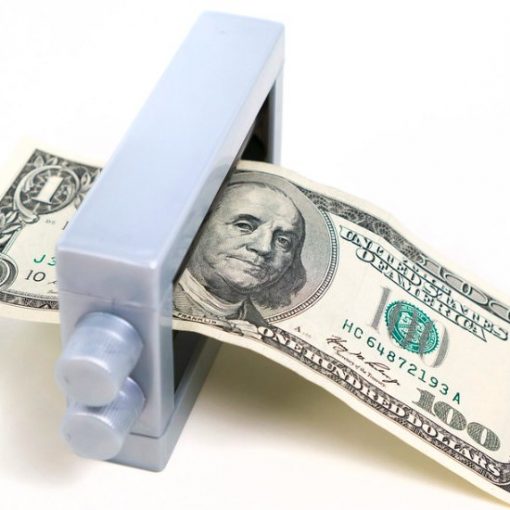The U.S. economy is stumbling toward the end of the year. The first release of third quarter G.D.P. was 2%. This however is misleading. September is the end of the government’s fiscal year. Spending by the federal government was up dramatically. Some estimates think this added as much as 0.6% to G.D.P. for the quarter.
The portion of G.D.P. that shows corporate capital spending has ground to a halt. The U.S. economy has slowed from 3% in the first quarter of 2011; to 1.9% in the first quarter of 2012, 1.3% in the second quarter and a misleading 2% in the third quarter. The fiscal cliff, tax policies, Europe, and our election have slowed the economy to a crawl. However, all is not lost. There are several sectors that are experiencing good growth. Also, central banks around the world are pouring liquidity into their economies.
The European leaders flounder back and forth over how much liquidity should be added to the economy. On the other hand, several of the southern European countries are resisting further belt tightening to reduce their deficits.
The European Union balances on the edge and so far has managed to avert disaster. China seems to have slowed their inflation to the point that they are adding liquidity and loosening lending requirements to encourage growth. Their manufacturing seems to have bottomed out and is showing a slight improvement.
Japan and Australia are also injecting funds to increase economic growth. As I mentioned in the first paragraph, the United States is slowing mostly from self inflicted wounds. Hopefully, the fiscal cliff will be avoided and some compromises can be achieved on taxes.
However, amidst all the doom and gloom with the U.S. economy are several areas of bright sunshine. The technological developments in the oil & gas industry are revolutionizing the economy. The real stimulus has been the lower cost of natural gas and the dramatic increase in oil production. This phenomenon is the increase in shale oil production. The shale play has increased U.S. oil production since 2008. The revolution is in the very beginning and we believe has the ability to dramatically increase in the future.
This, so far, has added 1.7 million jobs in an economy that needs them. Not only are people working on drilling rigs, but manufacturing jobs for hardware, pipe, pumps, compressors, controls and other components have been created. This production increase could add another two million or so jobs. The increase in oil production also generates about $60 billion in taxes to federal, state and local governments. It has also cut our balance of trade deficit by $75 billion in 2012.
The low natural gas price is lowering operating costs for many manufacturing companies. Utilities, where they are able, are changing from burning coal to burning natural gas for electricity production. For the first time, more kilo-watts are being produced from burning natural gas than from coal. This should help lower utility costs to both the commercial and residential user, helping the U.S. economy.
In addition, the increased production of natural gas liquids such as ethane, propane and butane has lowered the input costs for the chemical industry. As a result, chemical companies are moving production back to the U.S. from overseas which is causing plants in the Gulf Coast to expand capacity at a strong clip.
The American Chemistry Council stated that as long as natural gas liquids are poring out of wells, we will continue to have a decisive competitive advantage. The chemical industry has responded by announcing $40 billion in plant expansion. The lower prices are helping any industry that uses natural gas or natural gas liquids to be more competitive. In addition to the chemical industry American fertilizer manufacturers are benefiting greatly.
The fertilizer business in the U.S. and Europe is mature and only expands a few percent per year. However, Asian and Indian farmers are major users of fertilizer. Most of the increase in cereal production, that is grain used as food, was driven by the increase in fertilizer consumption in India and Asia. We beileve our manufacturers now have a much better chance of selling into these markets.
October has been a terrible month in the market due to the previously mentioned reasons. However BSG&L has a long term investment horizon. We still believe industrials are a place to be, however we are not adding to our positions until we see the market resolves some of its problems.
We like Caterpillar (CAT) as the best choice for heavy industrials. They recently lowered their forecast for 2015, but are increasing their earnings forecast for the fourth quarter. The forecast for three years from now will likely be revised several times before 2015 arrives. They are the behemoth in this business. Their sales in China and India have slowed, but their geographical diversity helps them. We still like Deere & Company (DE), Honeywell International (HON), United Technologies (UTX), and Emerson Electric (EMR).
In our opinion, several of these stocks are dramatically over sold. As the market settles down we expect to add to our positions. When the U.S. economy improves, we believe these companies will show large gains. In the energy service sector we like Helmerich & Payne (HP), Cameron International (CAM), Halliburton (HAL), Mitcham Industries (MIND) and Schlumberger (SLB).
Third quarter earnings slowed for several of these companies, but we believe they should show marked improvement in the upcoming earnings periods. Our commodities and energy holdings have changed very little. We continue to like Continental Resources (CLR), Anadarko Petroleum (APC) and EOG Resources (EOG) in energy.
EOG and Continental Resources have shown large increases in production year over year. We are adding to our position in Oasis Petroleum (OAS) and Whiting Petroleum (WLL). We still like industrial commodity producers Peabody Energy (BTU), Freeport-McMoRan Copper & Gold (FCX), Cliffs Natural Resources (CLF), and Southern Copper (SCCO). Industrial commodity prices have seen a large pull back, pulling these companies’ share prices down.
Our belief is that you should be building your cash position for now and let the markets settle down. I think you will be able to purchase these companies at good value prices before the end of the year for another good upward move. We are adding several chemical producers and fertilizer manufacturers. We like LyondellBasell (LYB), E.I. du Pont de Nemours (DD) and Terra Nitrogen Company (TNH). They also have a nice dividend, in our opinion.
As we have been saying for quite a few months now, the pipeline companies and commodity Master Limited Partnerships are experiencing tremendous growth although their stock prices have been impacted by the drop in oil and natural gas prices. We think this is an excellent time to add to these positions for the long term increases in stock price and distribution amounts that we think are coming.
As a result, in our Growth and Income Portfolio we continue to add Kinder Morgan Energy Partners (KMP), Linn Energy (LINE), Enterprise Products Partners (EPD), Sand Ridge Permian Trust (PER) and SeaDrill Limited (SDRL). These companies have good dividend rates of between 6% and 10%, according to MarketWatch data.
As new technology increases the output of oil, natural gas and natural gas liquids, this production will move through the new pipelines. We believe the above companies will show tremendous growth over the next ten years.
Gold last year was as volatile as the stock markets. I believe copper and oil will be the inflation hedges going forward. Central Banks around the world have injected so much liquidity into their markets that, when it is put to work, we believe commodities will move dramatically in price. BSG&L is a long term investor. We believe if you are patient, build cash and buy good companies on pull backs, your portfolio will have good growth over the long term.
The investments discussed are held in client accounts as of October 31, 2012. These investments may or may not be currently held in client accounts. The reader should not assume that any investments identified were or will be profitable or that any investment recommendations or investment decisions we make in the future will be profitable.
Certain investments discussed in this presentation are for illustrative purposes only and there is no assurance that the adviser will make any investments with the same or similar characteristics as any investments presented. The investments are presented for discussion purposes only and are not a reliable indicator of the performance or investment profile of any composite or client account. Further, the reader should not assume that any investments identified were or will be profitable or that any investment recommendations or investment decisions made by model managers in the future will be profitable.
Certain information contained in this presentation is based upon forward-looking statements, information and opinions, including descriptions of anticipated market changes and expectations of future activity. The manager believes that such statements, information and opinions are based upon reasonable estimates and assumptions. However, forward-looking statements, information and opinions are inherently uncertain and actual events or results may differ materially from those reflected in the forward-looking statements. Therefore, undue reliance should not be placed on such forward-looking statements, information and opinions.



